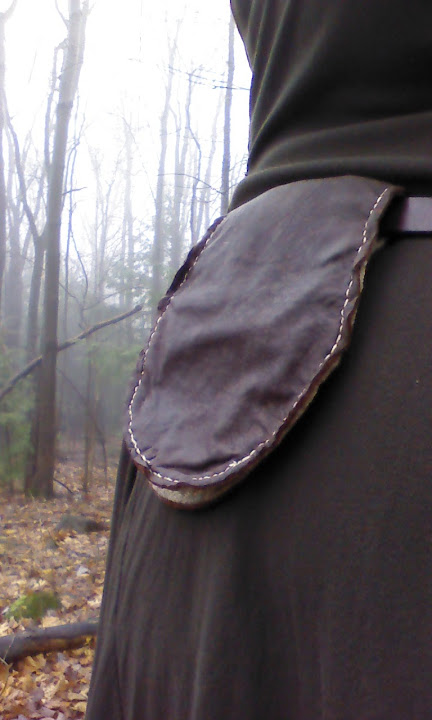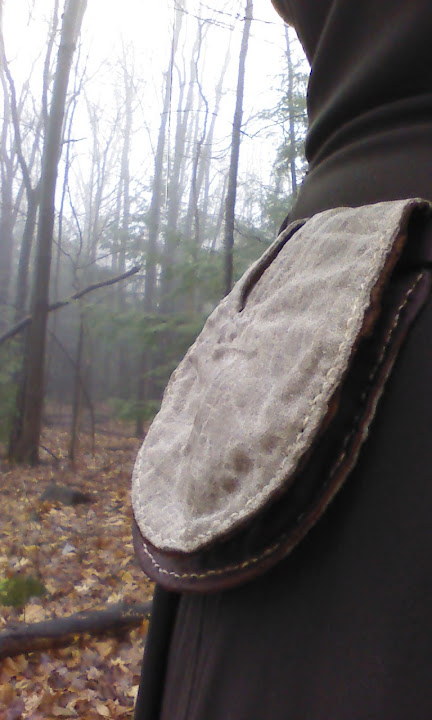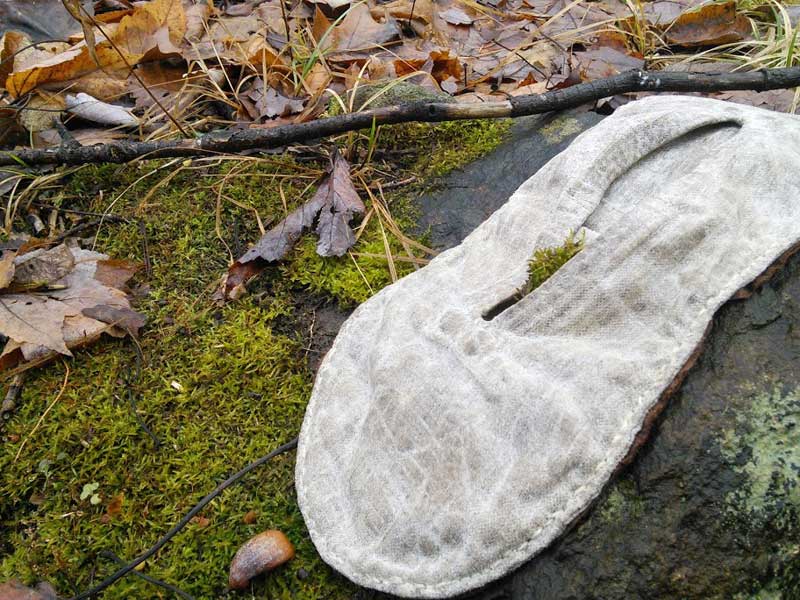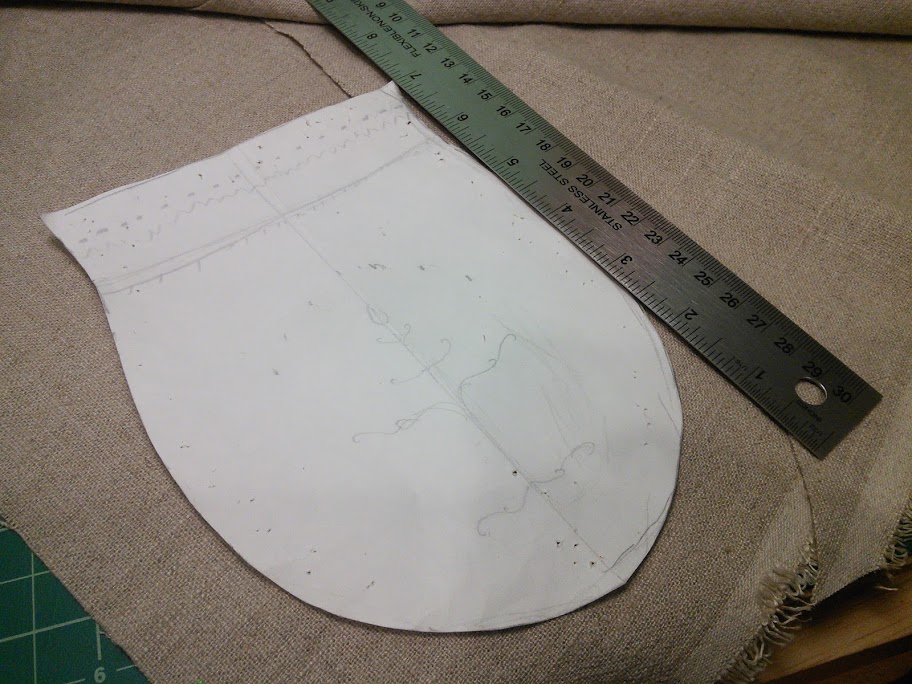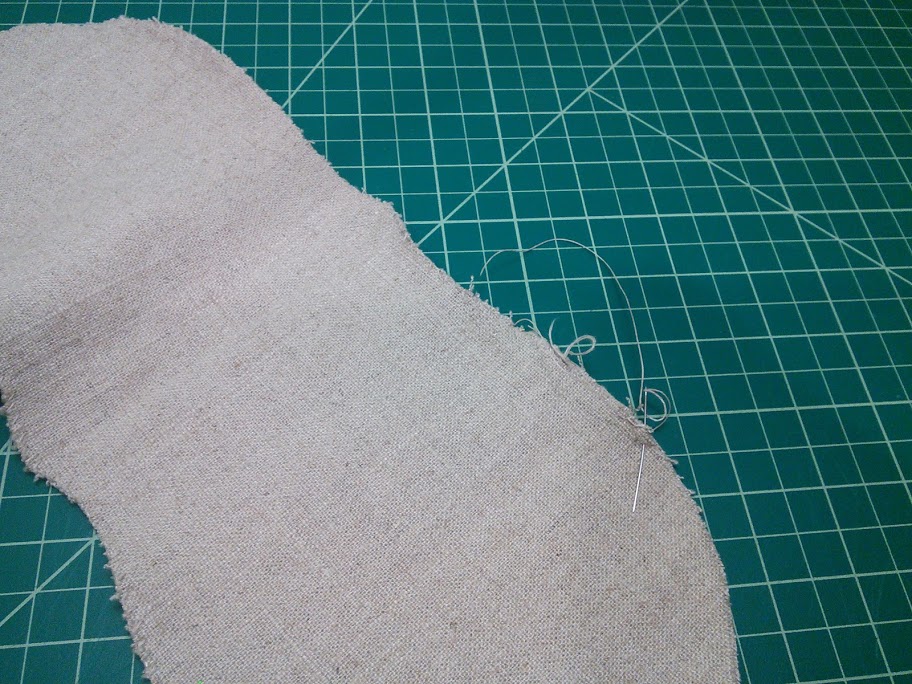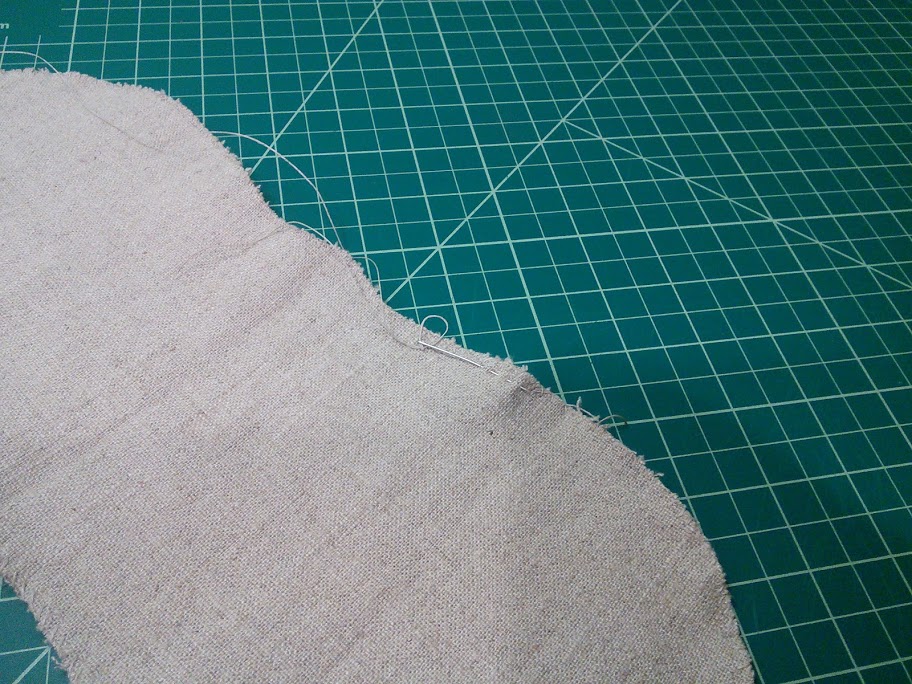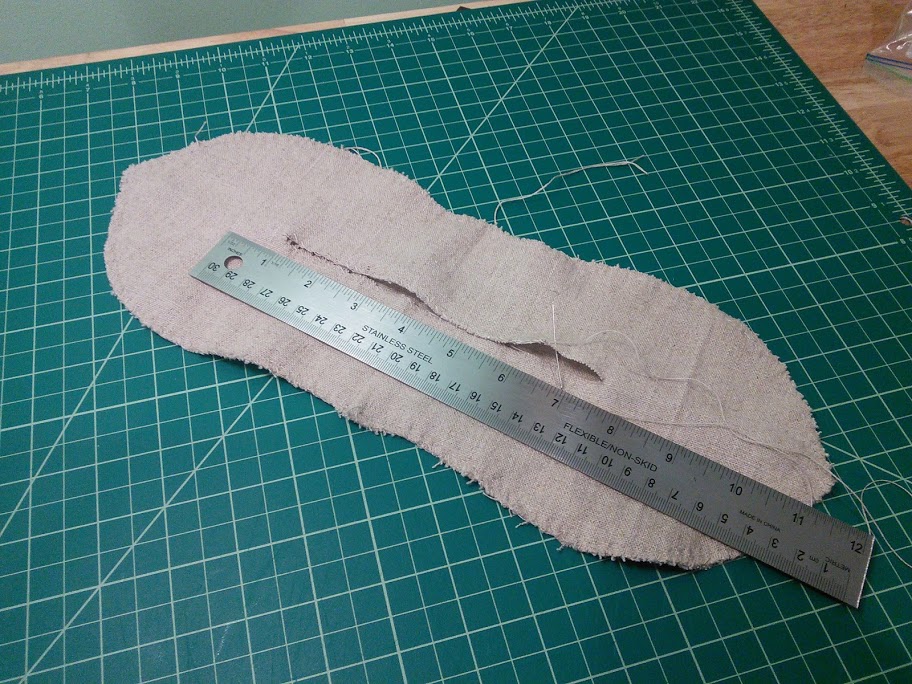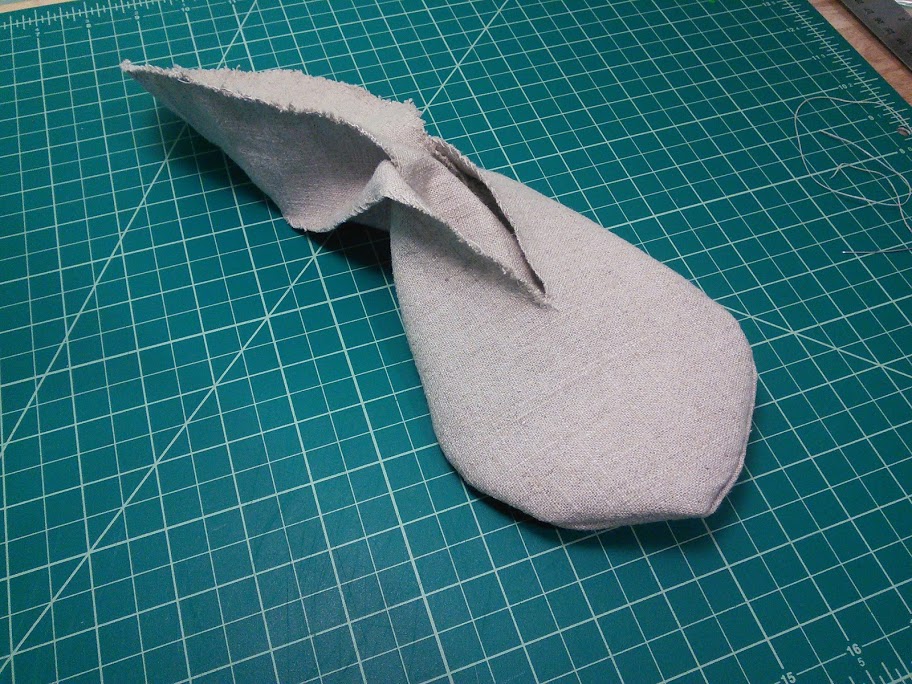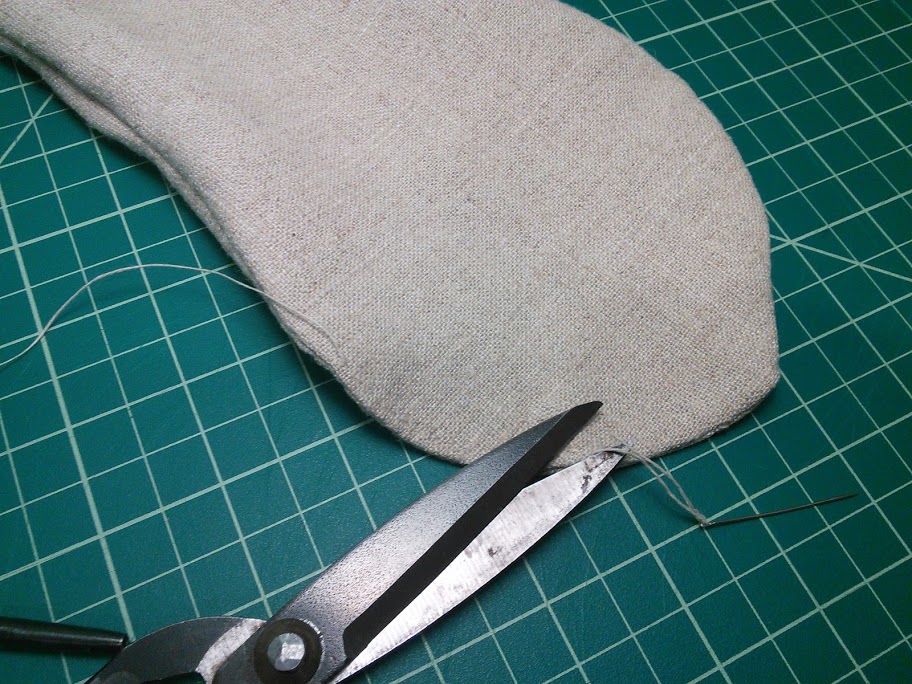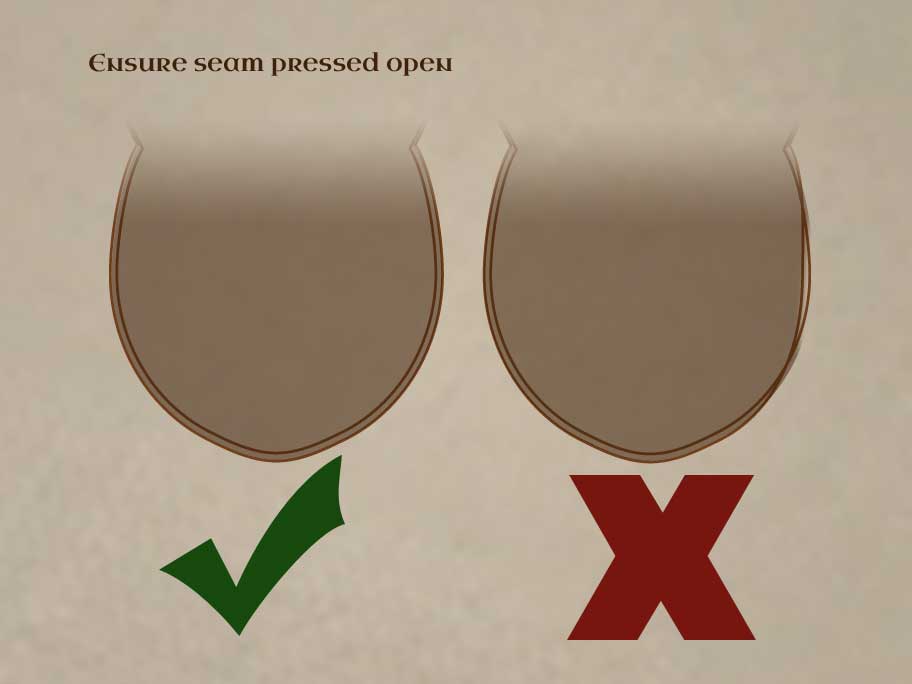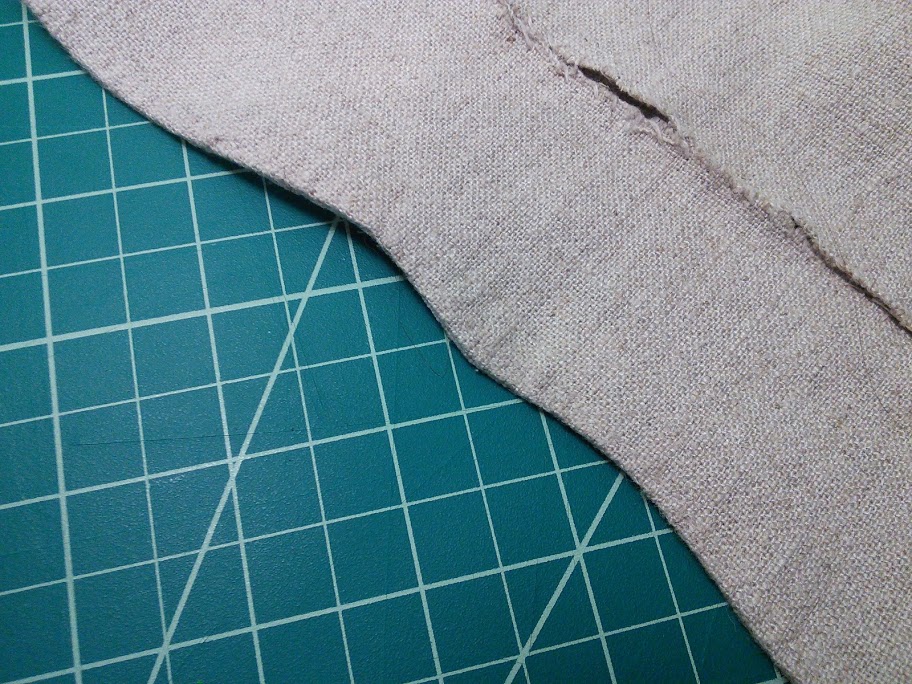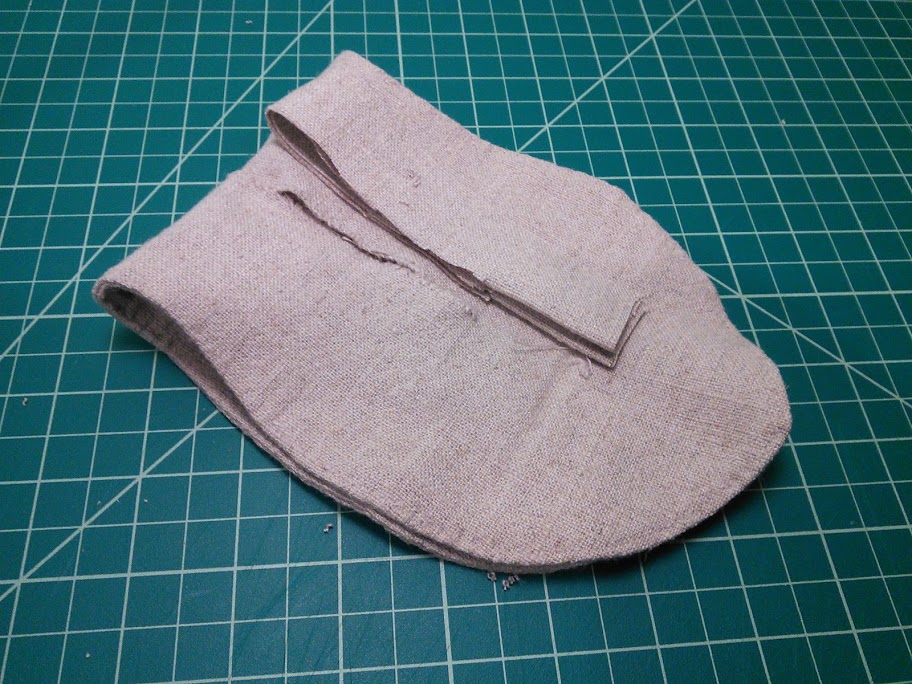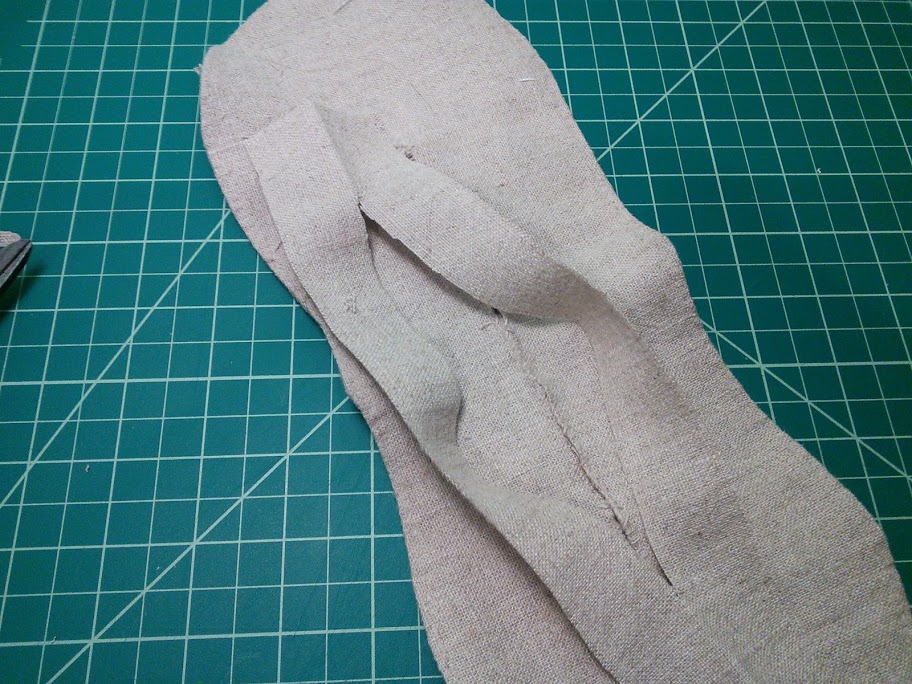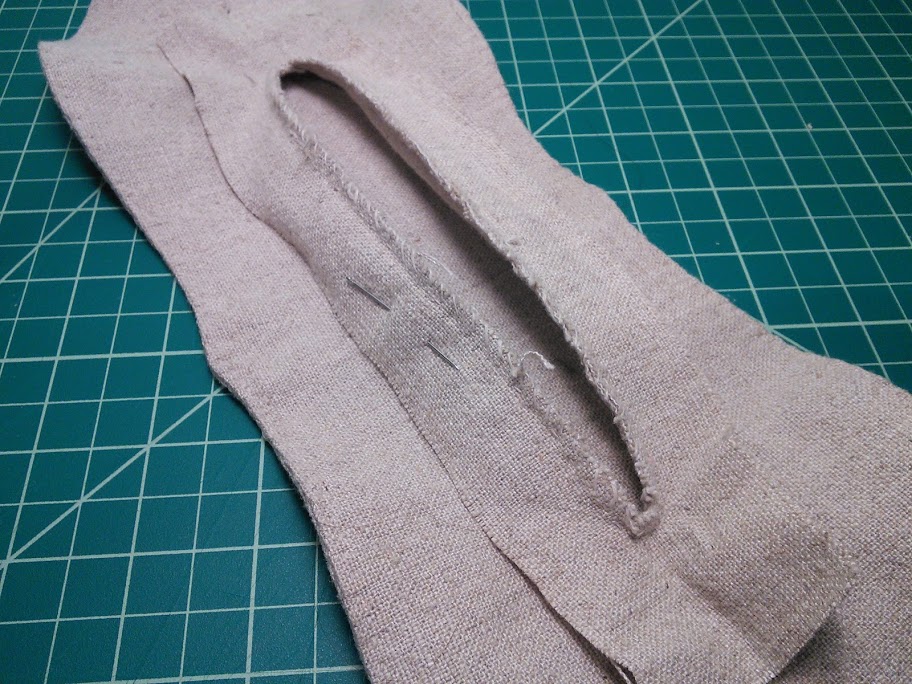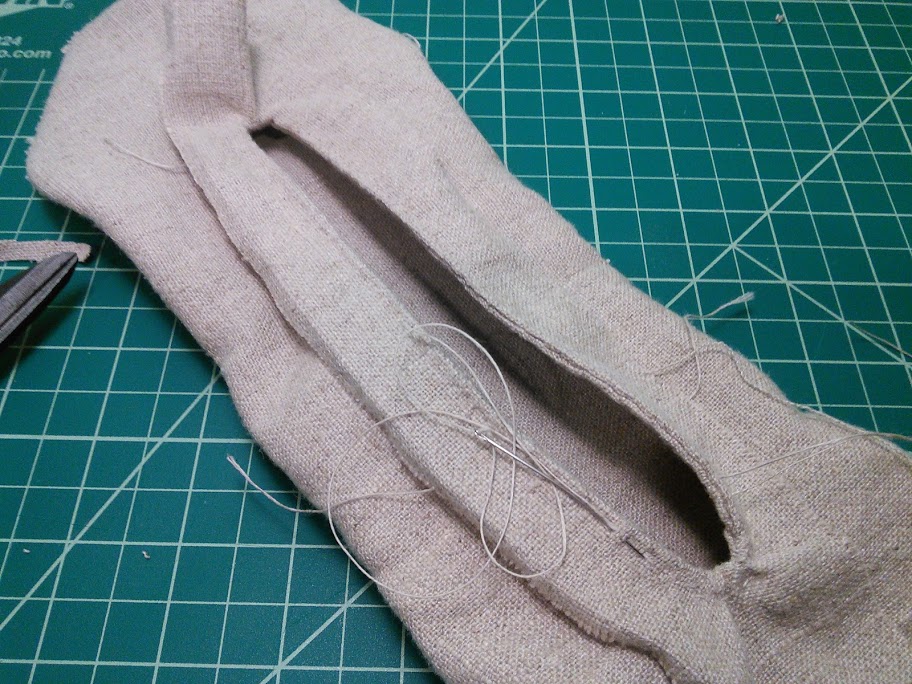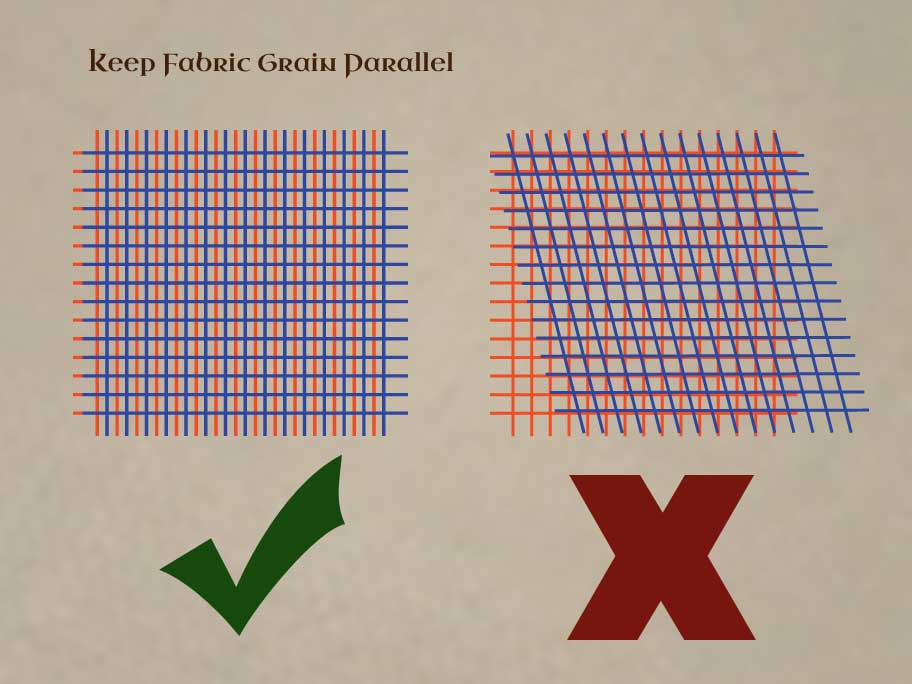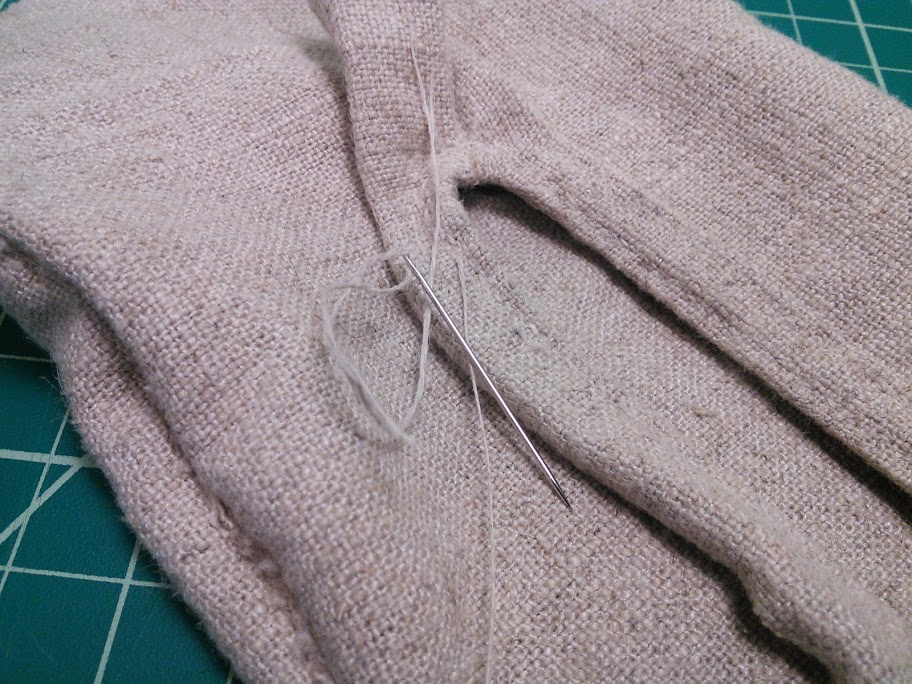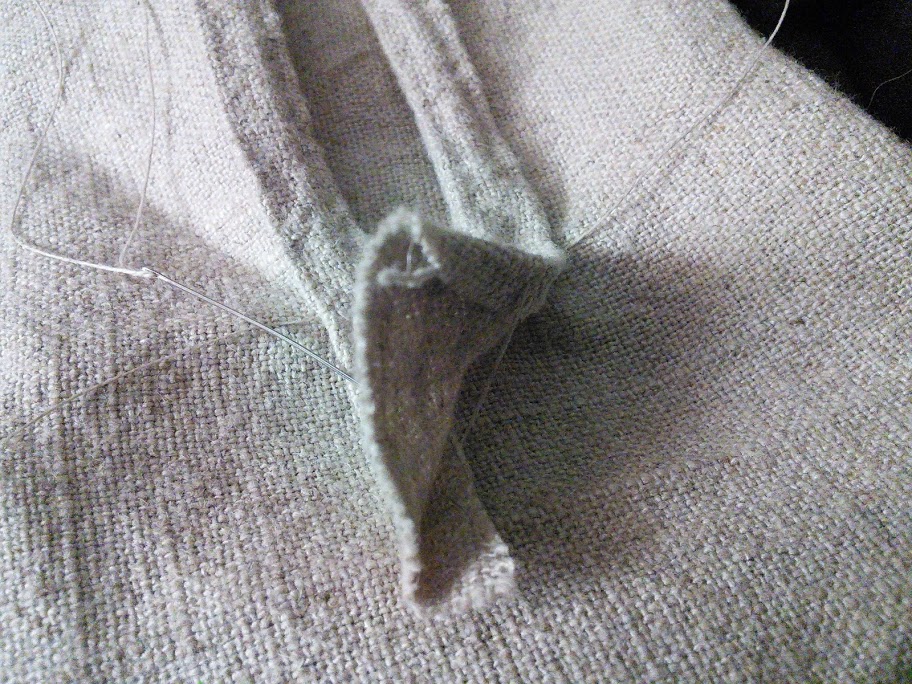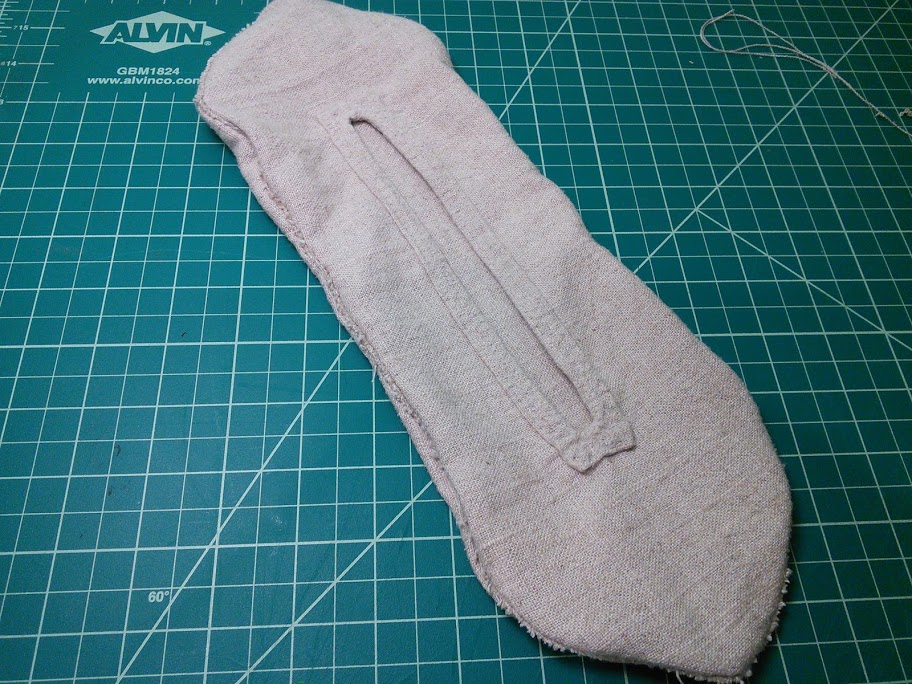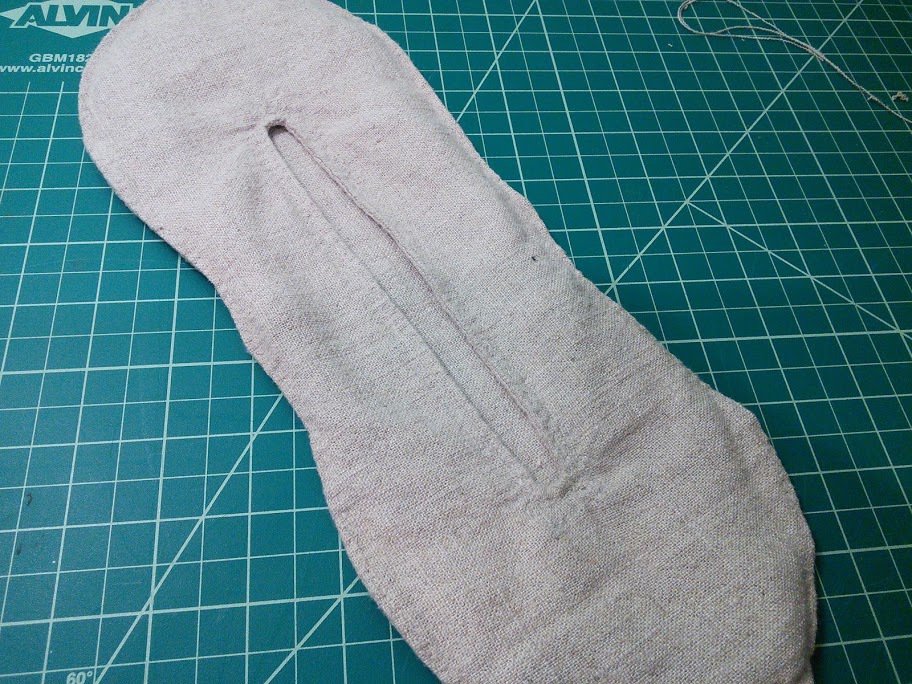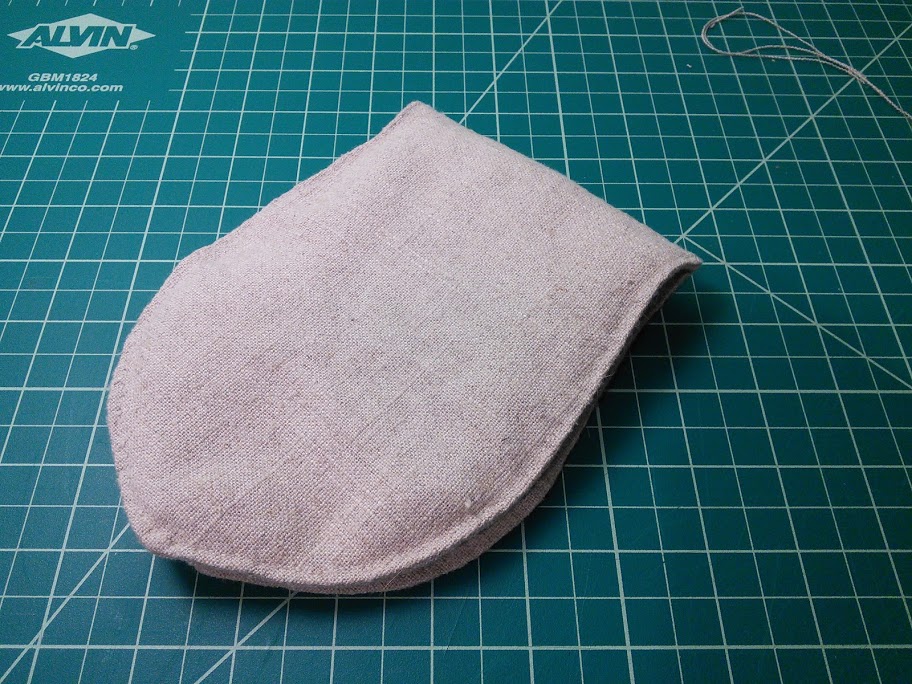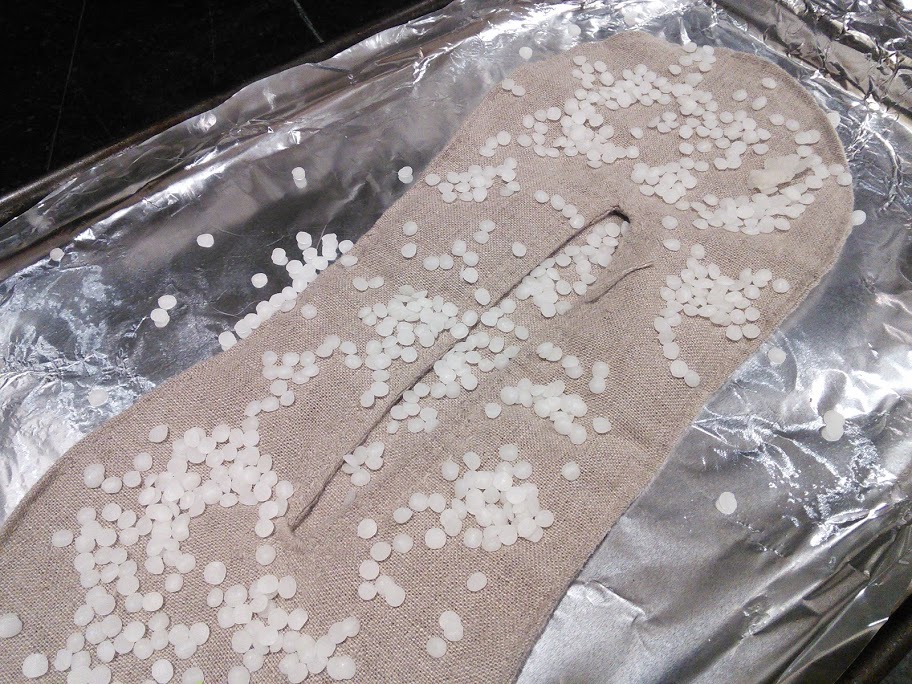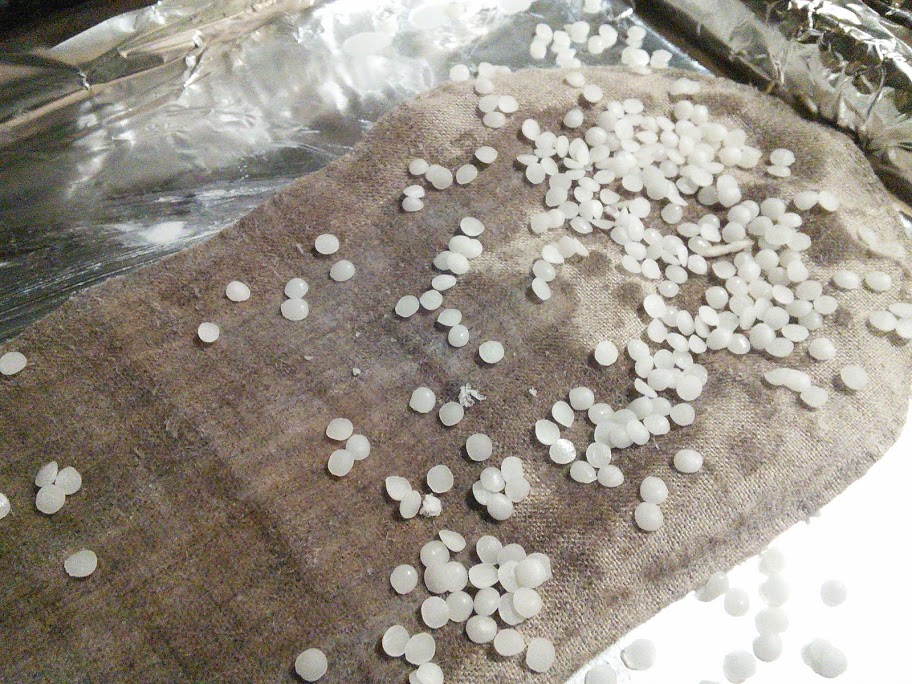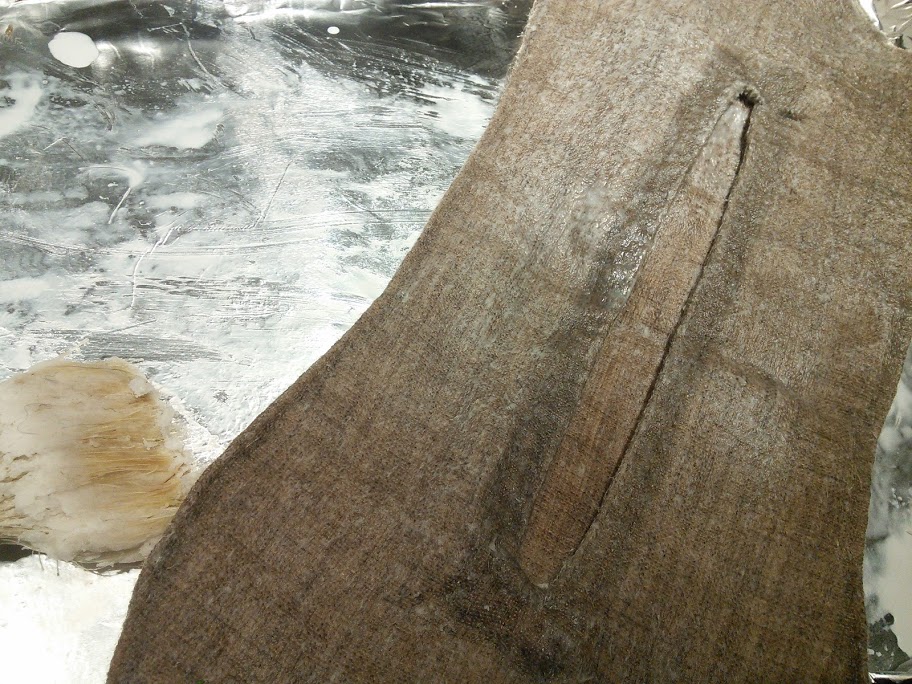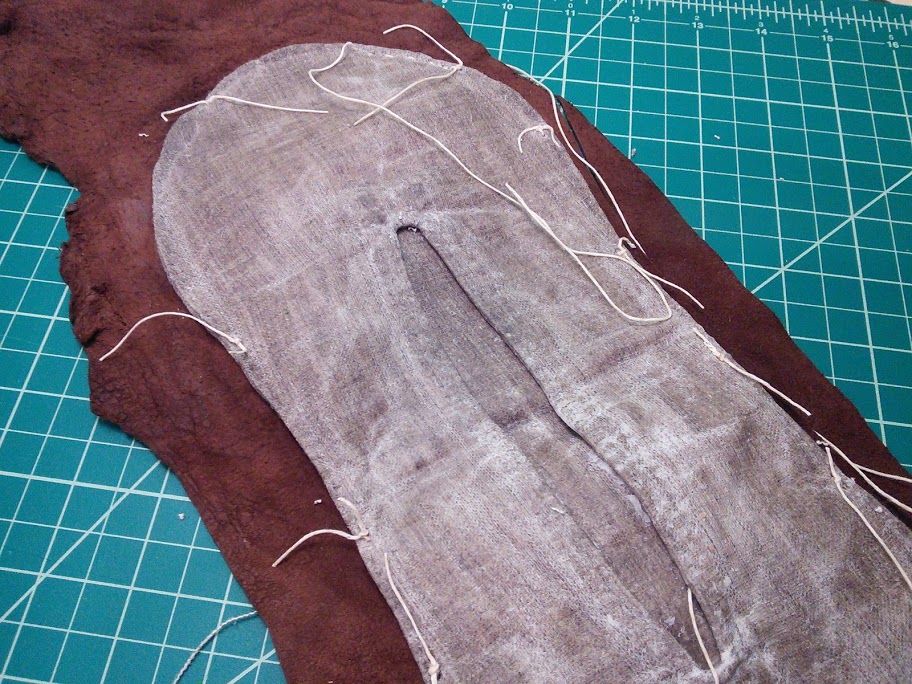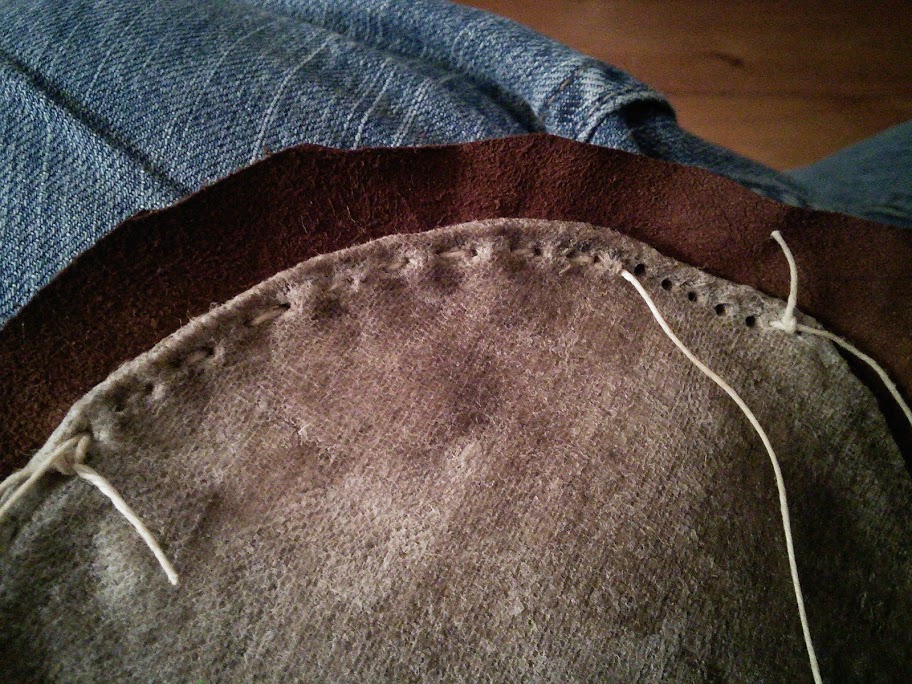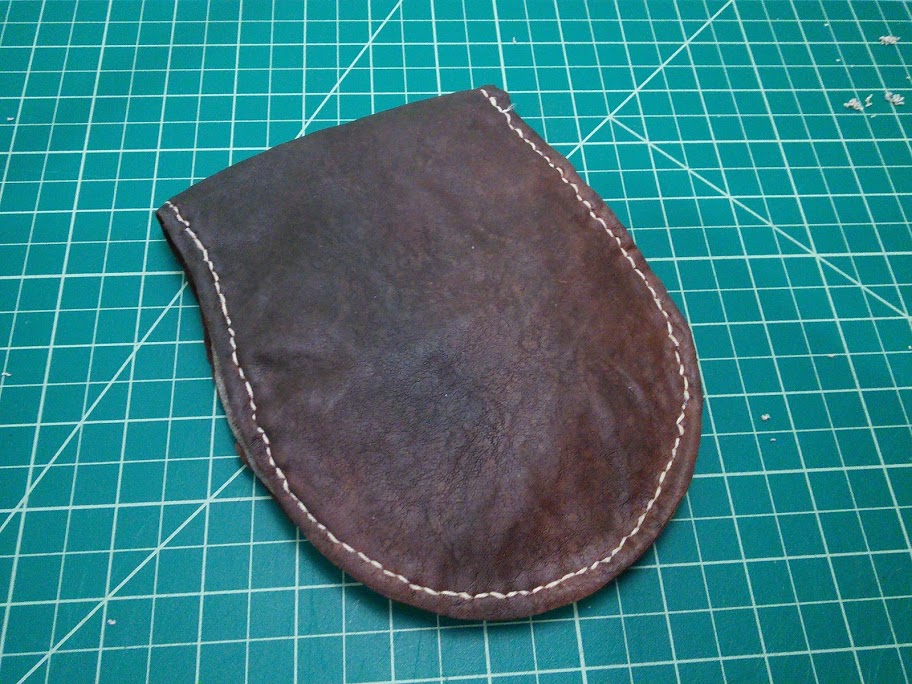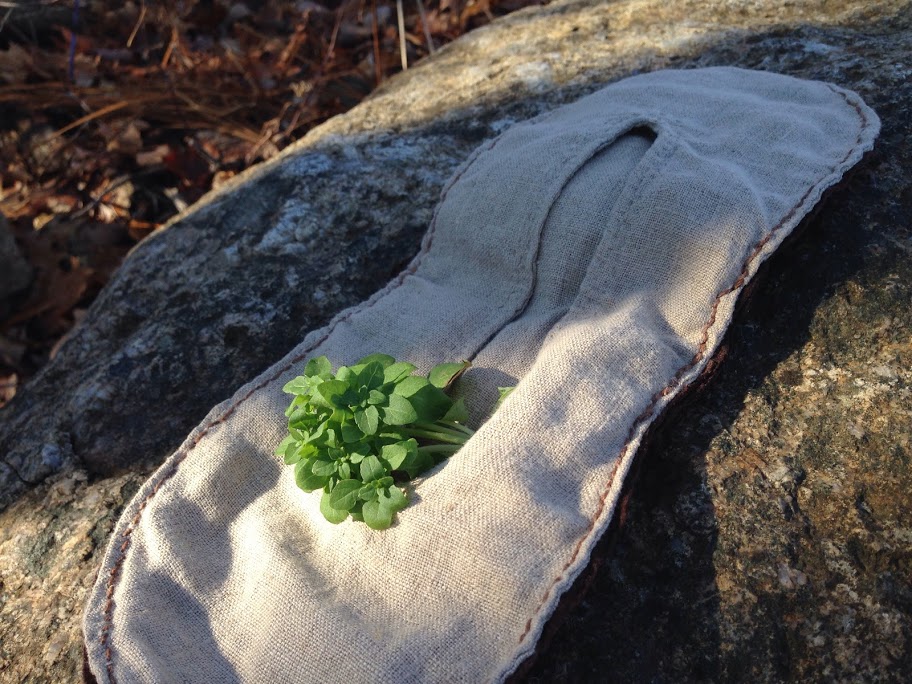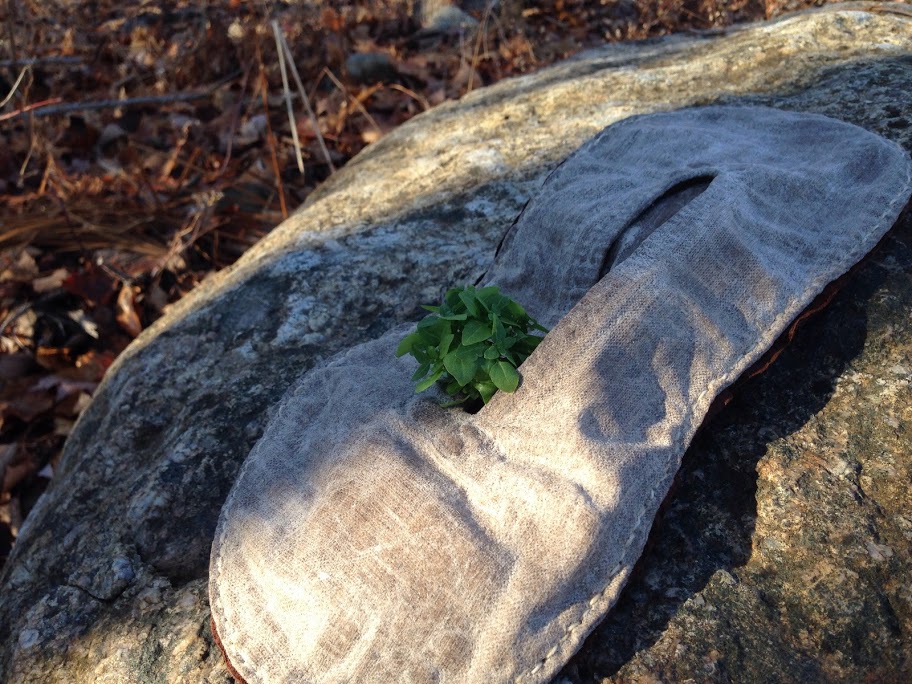The Lasdhir
From the pouch at his belt he drew out the long leaves of a plant. "These leaves," he said, "I have walked far to find; for this plant does not grow in the bare hills; but in the thickets away south of the Road I found it in the dark by the scent of its leaves..."
-Fellowship of the Ring, Chapter 12
The following project was inspired by Udwin's reference to the slit pouches of native North America: Udwin wrote: "In Book 1, Chapter 12, we read how Strider retrieves leaves of Athelas “...from the pouch at his belt...”. In thinking of smallish pouches carried about one's waist, I am reminded of 'split pouches' popular among Great Lakes/Eastern Woodland Natives. I was quite taken with his idea, as I love the utility of slit pouches - for a given size, I find there's remarkably less fumbling about for a buried item than I experience with a deep drawstring purse. I thought the design might be interesting then if given a more European flavor to better fit Middle Earth. When I paired that thought with my desire for a way to collect small amounts of wild materials along the trail without filling my regular pouches with dirt and debris, the Lasdhir was born.
As with so many of the mundane accouterments of everyday life, the origin of the lasdhir is lost to memory. Some say it originated with the wildermen of the west: others claim it must have originated with the Eldar. Regardless of the truth, it serves the men of the North humbly and well. Occasionally decorated, usually left plain, it is not unknown amongst those who make their way in the wild...
Lasdhir - a corruption of the Sindarin "little leaf" is - is a rather small slit pouch typically carried by simply passing one half through the belt:
It can then be quickly brought to hand, and carried as a gathering-purse of sorts as the occasion demands.
Materials
- A short length of linen:
You can get by with just 6" of fabric for this project, but I'd order at least a yard. It's my favorite material for small pouches: sturdy and with a wonderful nubbly hand to it. Just a little over $20 will get you enough material for a lasdhir and quite a few other little projects. - Thread:
35/2 natural linen thread
Note: If you haven't hand sewn with linen thread before, know that you'll need to wax your thread. Otherwise it will break a lot more often while you're sewing. - An outer layer:
This can be anything: leather, heavy canvas: even a second layer of the linen well-waxed.
I used a portion of a goatskin I got from rolipel in Italy on Ebay.
I used a thicker linen thread to fasten the outer layer to the pouch body. It's also sold in craft stores as linen cord for beading.
In a pinch you could probably use the regular sewing thread above, but depending on the material you use for your outer layer you may have more issues with thread breakage.
Technique
Step One: Layout
I used a fairly conventional "acorn" European pouch shape. The pouch will fold along the top edge of your pattern, resulting in a sort of hourglass shape.
Step Two
Cut out two pieces using your template and bind the edge. You'll want to do this part first because those rounded edges will quickly start to ravel if you don't bind them right off. You can be a little sloppy here - it won't show. Just be careful to take fairly small "bites" from the edge. Ideally you'll not have any stitch much more than 1/8 of an inch from the edge.
The other nice thing about doing this step first is that it holds everything in position for your next step.
Step Three
Sew a running stitch around the perimeter of the pouch - I use a backstitch every inch or so on general principles, do as you think best. You'll want to be as precise as possible here, because this is what will determine the final shape of the pouch. If your line wanders or you take a shortcut across a corner here, it WILL come back to haunt you later. Just slow down a bit and take care over each and every stitch.
Step Four
Determing how long you want the center slit of the pouch to be: I found around 6-7" a good size: as long as you have a good 2-3" from the end of the slit to the bottom of the pouch you should be fine. Be very careful when cutting the slit that you only go through ONE layer of fabric. This is a tricky maneuver, but I think it's worth waiting to this point to cut the slit. You can of course cut it in Step Two before sewing the pieces together, but then you'll have extra slop in one piece when trying to bind the layers together. I find doing it at this point less bother: your experience may differ.
Once the slit is cut, immediately bind it to prevent ravelling. You may lose a thread or two along the slit if it's not perfectly straight - that's all right, just snip off any loose threads and bind the remaining edge: you have a little margin of error here.
Step Five
Turn the pouch rightside out, so that the bound edge is now on the INSIDE of the pouch.
Step Six
Now's when it really starts looking like a real lasdhir! Sew another running stitch seam along the perimeter of the pouch. This is another place where you'll want to take care to be as precise as possible.
IMPORTANT: As you move along the edge, reach a finger inside the pouch and press the seam open, so that you follow your original line from Step Three as closely as possible.
Note how when the perimeter is completely sewn, you've kept the original curves of your template. I place my seam just shy of 1/8" in from the edge, so I'm biting through four layers. (That makes this technically a stab stitch I suppose).
You'll have a little bit of the bound edge from step two visible inside your pouch: I don't worry about that. You COULD run another line of stitches further in from your first to encase them, but I prefer this manner, where the weight of anything in the pouch is on a seam going through four layers, not just two. I don't expect that would make a difference in anything one would carry in this pouch, but I prefer to over-engineer where possible.
Step Seven
Now let's finish that slit: for this we'll be making a facing. Take a short length of fabric, a couple inches longer than your slit and about 1.5" wide (you'll trim it down later, err on the side of too big.) Cut a slit down the middle of the facing of the same length as the one on the pouch. I fold the facing into quarters and compare with the pouch slit, but feel free to use a ruler instead. As long as both slits are approximately the same length, you're good.
Step Eight
Make sure the pouch is RIGHT SIDE OUT. Place the facing on top of the pouch, and align the slits. Then begin binding the two edges together, just as you did in Step Two.
Step Nine
Sew a running stitch seam around the slit, about 1/8" back from your edge binding - just as you did in Step Three.
Step Ten
This is when it gets a little interesting - first, FOLD THE POUCH BACK INSIDE OUT.
Then fold the edge of the facing over out through the slit, so that the facing is now OUTSIDE the pouch again. You'll probably find that the fabric bunches a bit around the ends of the slits and is hard to keep in place: don't worry about that at this point.
Just as you did in Step Six (are you sensing a theme here?) - sew a running seam around the LONG edges of the slit. I find it easiest to start in the middle of the slit, and work to about 1/2" from the end. Do make certain that the grain of the facing fabric and that of the pouch remain parallel: if you're sloppy here, you WILL have problems when it comes to the end of the slits.
Assuming that you keep everything parallel, by the time you get to the ends you should have a fairly easy time maneuvering everything into position to get a nice seam running all the way around the slit.
Step Thirteen
Now we're going to clean up the facing: trim the long edges of the facing down to around 1/2, and fold them under. With a long running stab stitch, sew the long edges of the facing to the body of the pouch. Again, we do the long edges first, as it will hold the pieces in place for us once we get to the ends:
Step Fourteen
With the long edges sewn, take a moment to "worry-rub" the ends a bit to smooth out any unevenness. Assuming you kept everything straight in earlier steps, you should have a nice little tail hanging out at each end:
Step Fifteen
Trim those "tails" to a little over 1/2" long. Then just as before fold them under and sew them down. I find it easier to FIRST sew the folded-over tail "closed" THEN sew the already folded piece down to the body. It's a couple extra minutes, but it keeps everything in place and makes the whole process much less fumble-fingered.
Step Sixteen
Turn the pouch body back right side out.
Congratulations! That hard part is done: you now have a finished pouch body!
OPTIONAL: Waxing the pouch body
You don't have to wax the body of the pouch. I have made these pouches both ways now, and like both approaches. You will have a little more water and stain resistance with a waxed pouch body, but the pouch won't breathe well, and it will become stiffer. It's an entirely personal choice.
If you do choose to wax your pouch, the process is quite easy.
Materials:
- Baking sheet
- Tinfoil
- Small paint brush
- Beeswax: I used 100% beeswax pellets from Amazon
Step One
Line a baking sheet with tin foil. DONT skip this step, or you'll have a bear of a time cleaning your cookware next time you want to make cookies! Preheat the oven to 175 degrees.
Step Two
Place your pouch body on the foil and cover it with beeswax.
Step Three
Place your pouch in the oven for 10 minutes. At the end of that time, take a look. If you didn't get full coverage, no problem: just add more and put it back in for another 10 minutes
Step Four
Your pouch should be soaked through with wax. Use the paintbrush to make certain the entire thing is covered, and the wax is fully saturating the fabric. IT WILL BE HOT, but try to take the pouch off the foil as soon as you can. Once the wax starts to cool, it will be really sticky and won't want to let go of the foil.
Step Five
I held the (HOT HOT HOT) pouch in the air until it cooled a bit - using a wire hook to spare your fingers might be the smarter move. : ) Once it's cooled off enough to no longer be sticky, you can lay it down again.
I've read others use a dryer to set the wax: I don't find that necessary, as in the next step you'll be handling the pouch a lot and working it soft(ish) again.
Backing the pouch
Step One
Lay your backing material good side down on your work surface. Lay your pouch slit side up on top of the backing material. With an awl and heavy thread, tack down each end, the middle, and a few other spots around the perimeter to keep everything together. Be sure to fold the pouch closed now and again as you're working to ensure there's enough backing material. Remember that when folded the outside has a slightly larger circumference than the inside: a thicker leather then may need to be a skosh longer in the middle to fold well, so we're checking real-world fit before doing anything irrevocable.
OPTIONAL
If you want to decorate the outer layer with tooling, embroidery, beading, or the like, now you can more easily center your work, knowing exactly where it will appear on the finished piece. I've not done a decorated piece yet: but one day perhaps. : ) Regardless - for most kinds of decoration, this is your last chance to do it.
Step Two
Using your awl if necessary, complete sewing the backing to the pouch. I use a saddle stitch for a mostly-even line of stitching around the perimeter. When you come to the tie-downs from before, just pick them out.
Step Three
Trim the edge of the backing material to *just* overhang the edge of pouch body. If you're using a leather or fabric thin enough, you can fold it over and bind the edge: I didn't bother with mine. This is a strictly utilitarian piece:
And now you're done!
Just tuck one end through your belt and you're ready to hit the trail. If you're concerned about losing it, a simple thong run through holes at the bottom of each half can keep it closed over your belt, or you can arrange some fashion of clasp.
I'm sure no two lasdhir are ever exactly alike.
Novaer, Ranger!
